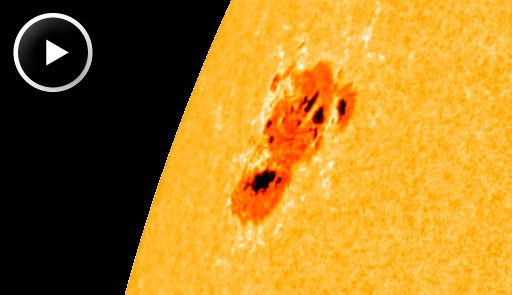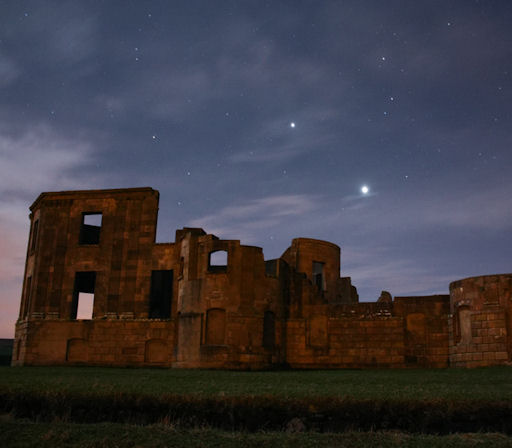Metallic photos of the sun by renowned photographer Greg Piepol bring together the best of art and science. Buy one or a whole set. They make a stellar gift. | | |
FLYING THROUGH A GEOMAGNETIC STORM: Lately, the International Space Station has been flying through geomagnetic storms, giving astronauts a close-up view of the aurora borealis just outside their windows. ISS Flight Engineer Don Pettit shares the experience in a new video from Science@NASA.
BIG SUNSPOT: A sunspot almost four times as wide as Earth itself is rotating onto the solar disk. NASA's Solar Dynamics Observatory recorded its entrance on March 2nd and 3rd; click to view a 24-hour animation:

The sunspot has a 'beta-gamma' magnetic field that harbors energy for strong M-class solar flares. Indeed, it has already unleashed an M3-class eruption on March 2nd that created mild waves of ionization in the atmosphere over Europe.
Earth-effects could become stronger as the sunspot turns toward our planet in the days ahead. NOAA forecasters estimate a 55% chance of additional M-class flares and a 5% chance of an X-flare during the next 24 hours. Solar flare alerts: text, phone.
more images: from Dennis Put of Brielle, The Netherlands; from Pavol Rapavy of Observatory Rimavska Sobota, Slovakia; from Maximilian Teodorescu of Bucharest, Romania; from Jim Werle of Henderson, Nevada;
LOOK, THEN TURN AROUND: Just after sunset, as the evening sky fades to blue, Venus and Jupiter emerge from the twilight arrestingly close together in the western sky. Martin McKenna photographed the pair last night above the moonlit ruins of Downhill Estate in Co. Derry, Northern Ireland:

"Venus and Jupiter looked so beautiful," says McKenna, "They were simply stunning!!"
The two bright planets are converging for a 3o close encounter on March 12-13 that NASA says could be physiologically mesmerizing. They are so bright, you can see them through city lights and even thin clouds.
Done looking? Turn around. Another planet, almost as bright and more beautifully colored can be found rising in the east. Mars is putting on a show of its own opposite Venus and Jupiter. The Red Planet is at its closest to Earth for all of 2012 on March 5th. It appears at sunset and soars overhead at midnight--an easy target for the naked eye and backyard telescopes alike. [sky map]
more images: from Vesa Vauhkonen of Rautalampi, Finland; from Monika Landy-Gyebnar at Lake Balaton, Hungary; from Rob Ratkowski of Haleakala summit, Maui; from Petr Horálek of the Academy of Sciences of the Czech Republic;
February 2012 Aurora Gallery
[previous Februaries: 2011, 2010, 2009, 2008, 2007, 2006, 2004, 2003, 2002]

